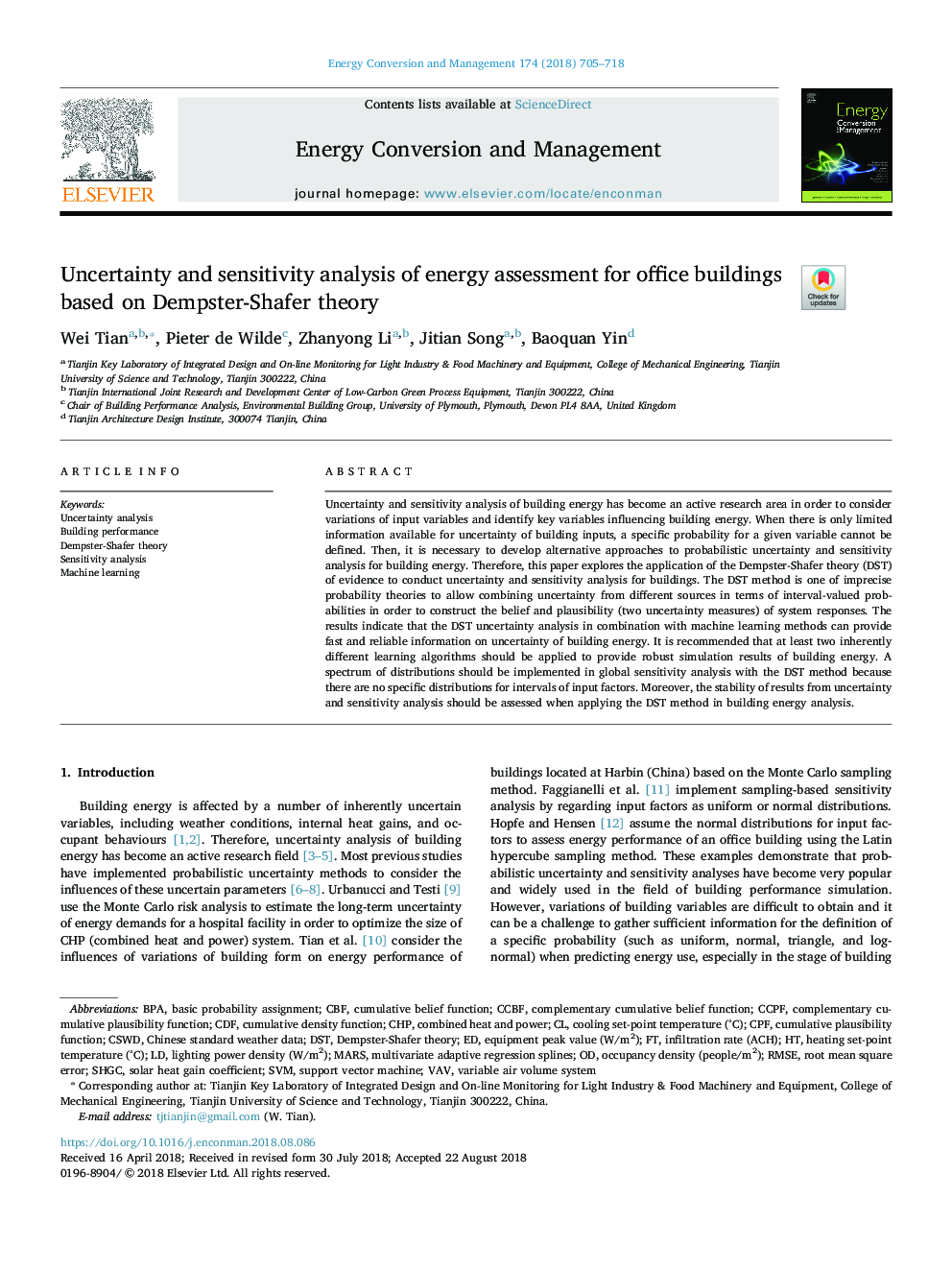| Article ID | Journal | Published Year | Pages | File Type |
|---|---|---|---|---|
| 11003802 | Energy Conversion and Management | 2018 | 14 Pages |
Abstract
Uncertainty and sensitivity analysis of building energy has become an active research area in order to consider variations of input variables and identify key variables influencing building energy. When there is only limited information available for uncertainty of building inputs, a specific probability for a given variable cannot be defined. Then, it is necessary to develop alternative approaches to probabilistic uncertainty and sensitivity analysis for building energy. Therefore, this paper explores the application of the Dempster-Shafer theory (DST) of evidence to conduct uncertainty and sensitivity analysis for buildings. The DST method is one of imprecise probability theories to allow combining uncertainty from different sources in terms of interval-valued probabilities in order to construct the belief and plausibility (two uncertainty measures) of system responses. The results indicate that the DST uncertainty analysis in combination with machine learning methods can provide fast and reliable information on uncertainty of building energy. It is recommended that at least two inherently different learning algorithms should be applied to provide robust simulation results of building energy. A spectrum of distributions should be implemented in global sensitivity analysis with the DST method because there are no specific distributions for intervals of input factors. Moreover, the stability of results from uncertainty and sensitivity analysis should be assessed when applying the DST method in building energy analysis.
Keywords
BPADSTCBFCPFRMSEVAVCDFCHPSHGCBasic probability assignmentDempster-Shafer theorycumulative density functionUncertainty analysisSensitivity analysisCombined Heat and PowerMultivariate adaptive regression splinesRoot mean square errorMarsVariable air volume systemSolar heat gain coefficientBuilding performanceSVMSupport vector machineMachine learning
Related Topics
Physical Sciences and Engineering
Energy
Energy (General)
Authors
Wei Tian, Pieter de Wilde, Zhanyong Li, Jitian Song, Baoquan Yin,
